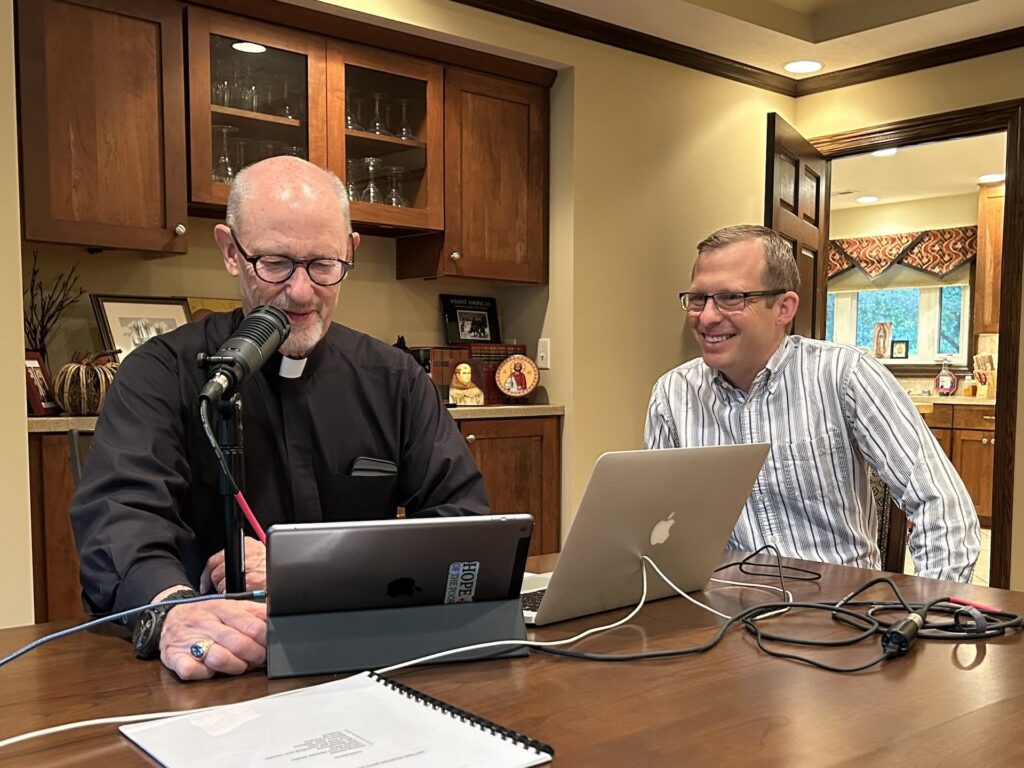It’s that time of year when we should start thinking about what we will do this Lent. The first step to making a good Lent begins beforehand. In both East and West (the Byzantine and Roman Catholic traditions), a preparatory season historically comes before Lent starts. The Lenten preseason serves as a spiritual threshold, a call to readiness before the more intense period of fasting and penance proper to Lent. It awakens the spiritual senses of the faithful, preparing them mentally and spiritually for the austerity of Lent, and provides a more gradual transition into the strict fasting and abstinence of Lent, making it less abrupt and more sustainable.
Byzantine Pre-Lenten Traditions: The Triodion
The pre-Lenten period, known as the Triodion, is still observed in the Byzantine tradition. Its origins can be traced back to the monastic communities of the Eastern Christian world in the 4th century. The Triodion commences ten weeks before Easter and leads into a preparation period through incrementally increased prayer, humility, and fasting.
As part of this gradual approach, the Byzantine Church prescribes different fasting rules for each week of the Triodion. “Meatfare Week” (two weeks before Lent) marks the exclusion of meat from the diet, and “Cheesefare Week” (one week before Lent) eliminates meat, dairy, and eggs, with fish being permitted until Cheesefare Sunday. This stepwise intensification of fasting practices helps the faithful to mentally and spiritually prepare for the Great Lent, in which Eastern Catholics only eat one meal a day from Monday to Friday. For this meal, they abstain from all animal products, including meat, fish with backbones, dairy products, and eggs, as well as oil and wine for the entire period of Lent.
Roman Catholic Pre-Lenten Traditions
The Roman Catholic Church, though differing in specifics, similarly observes a pre-Lenten period. Historically, this was broken into three periods: Septuagesima (70 days), Sexagesima (60 days), and Quinquagesima (50 days). These seasons began to be observed around the sixth century. The Lenten season was incrementally extended to sixty and then seventy days by the 7th century, incorporating the weeks before Quinquagesima and Sexagesima and the days following Easter. These changes reflected a Roman effort to extend the preparatory nature of Lent and ease the faithful into the full Lenten fast.
The pre-Lenten Sundays of Septuagesima, Sexagesima, and Quinquagesima did not impose fasting obligations but emphasized moral readiness and the beginning of penitential practices. This gradual preparation, represented by liturgical changes such as the introduction of violet vestments and the suspension of the Alleluia, aimed to ready the faithful for the forthcoming Lenten fast.
The Modern Observance of the Pre-Lent
Though distinct in their historical development and liturgical expressions, the pre-Lenten traditions of the Byzantine and Roman Catholic Churches reflect the universal Christian tendency of preparation for Lent. They remind the faithful of the perennial rhythm of fasting and feasting that defines the liturgical year. The evolution of these traditions, particularly in the Roman Catholic Church—from the fifty-day period to the seventy-day Lenten season—highlights the dynamic nature of liturgical practice and its ability to adapt and respond to the devotional needs of the faithful across time.
Today, there is no formal pre-Lenten season on the General Roman Calendar, but this does not mean that there is no room for a devotional pre-Lenten fast. Quite to the contrary, a devotional (non-liturgical) pre-Lent would harmonize with the history of the liturgy and foster greater devotion before Lent. The history of both the East and of the West has shown that a pre-Lenten fast is helpful for making a good Lent.
Pre-Lent with Exodus
This year, Exodus offers a new exercise for the weeks leading up to Lent, focused on the beginning of the Book of Genesis. Like the great patriarchs, God is calling us to listen to his voice and respond.
If you would like to make a good Lent, these pre-Lenten observances will help you ease into the intense penances of the holy season of Lent. Exodus 90 has served as a pre-Lenten fast for over 100,000 men. Now you can join us at Exodus to prepare your mind and heart for the observance of Lent and the joyous celebration of the resurrection at Easter.





